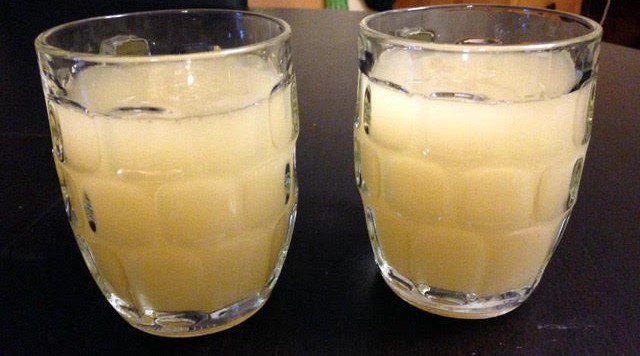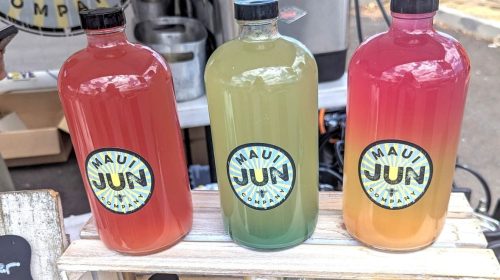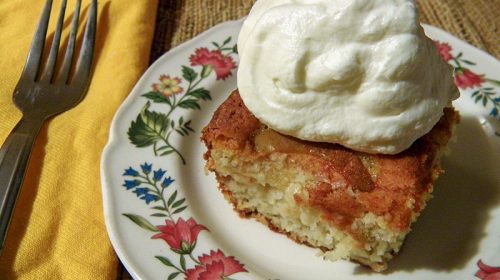Mountain Fermenters: A Taste of West Country White Ale
By Mike De Smidt and Greg Roe
This month, we’re going on a fermentation adventure. West Country White Ale, sometimes called Devon White Ale, is a seemingly odd beer with roots back to at least the 1500s, perhaps even the Middle Ages. An ale variety that existed before hops were a common ingredient, it was traditionally brewed in Devon and Cornwall, England, UK from at least the mid-1500s through the late 1800s. It is made from barley malt, wheat flour, egg whites, yeast, and possibly some spices.
An early mention of West Country White Ale was published in 1542 in Andrew Boorde’s A Dyetary of Helth. It is mentioned again in 1736 by William Ellis in The London and Country Brewer where he gives what might be the earliest known recipe:
“…a clear Wort made from pale Malt, and fermented with what they call ripening, which is a Composition, they say, of the Flower [flour] of Malt, Yeast and Whites of Eggs…the Wort is brewed and the Ale vended by many of the Publicans; which is drank while it is fermenting in Earthen Steens, in such a thick manner as resembles butter’d Ale, and sold for Twopence Halfpenny the full Quart.”
Other recipes appear in 1768 and again in 1830, where a version now utilizing hops is given:
“Pale ale wort, 25 gallons; Hops, 2 handfuls; Yeast, 3 pounds; Groats, 6 or 8 pounds: When the fermentation is at its height, bottle in strong stone half pints, well corked and wired. This ale effervesces when opened.”
Let the fermentation adventure begin!
If this were to be “drank young,” we knew we only wanted to brew one gallon. So we set about putting together the following recipe for a 1.1 gallon (4.16 liters) Brew-In-A-Bag (BIAB) batch:
1.75 lbs (0.79 kg) Pale Malt, or Pilsner Malt
1 egg white
3oz (85g) whole wheat flour
1/3 package Safale S-04 English Ale Yeast
a pinch of ground ginger
a pinch of ground coriander seed
We began heating around 1.75 gallons (6.6 liters) of water up to 152°F for the BIAB mash. While that was going, Greg mixed the egg white, wheat flour, and yeast together. It was a bit too crumbly though. Being wary of adding another egg white (or just chicken; get it?), we added water, one spoonful at a time until it had what seemed to be a nice bread starter-like consistency. After about an hour (while the mash was going) it became active and greatly increased in size.
We cooled the mash in an ice bath in the sink. The original gravity ended up being higher than expected (especially considering we were doing BIAB), 1.049 (over 80% efficiency!). Once everything was ready, we poured enough of the cooled wort into the yeast starter to make it thin and pourable and then poured the wort into a washed, but not sanitized, one-gallon jug, and then added the yeast. Rather than use an airlock – we’re not going for sanitation here – we just put a loose piece of foil over the top of the jug.
The 24-hour mark. Time to drink. Checking the gravity, it had dropped to around 1.030 (about 2.5% abv). The ale poured an opaque off white and looked a bit like Horchata. We grabbed our glasses and said “cheers!” It was, as expected, slightly sweet, as it had not yet fully fermented. Not bad though. Certainly better than the muck or mire we were half expecting. The spices were not really discernible. Subtly effervescent. Definitely very yeasty, but not overwhelmingly so. The main thing that came to our minds was fresh “liquid” bread that had a touch of sugar or honey in it. Yeah, we could actually drink more of this. Maybe a full pint! Even two?
West Country White Ale is best drunk young. It’s a very different type of ale. Certainly not for everyone. And certainly unlike anything you can buy in a bottle, can, or keg anywhere today. It’s probably only for the most adventurous brewers and drinkers. However, we think with the right mindset (and proper timing!) it really could be enjoyable.
However, we had one more thing I wanted to experiment with. What if we let the fermentation go another 24 hours? How would the taste compare? What would the gravity be? The jug was returned to the cool garage.
tick tock tick tock…
So, 24 hours later, I checked the gravity again (now below 1.010 OG; just above 5% abv). But, uh, oh. Problems. Upon removal of the foil I smelled a subtle rancid note in the air. The faint scent again made itself known while pouring the pints.
Undeterred, we clanked our raised glasses, and said a hearty, “cheers!”. Bottoms up. The sweetness was all but gone; fermented away, leaving a very dry beer. And yeah, well, that subtle rancid note was definitely an infection in the beer. It wasn’t nearly as good as the day before. In fact, it wasn’t very good at all. Being adventurous drinkers, however, we both finished our pints — though not without a couple winces and grimaces. It probably goes without saying that at this point, no one cared for seconds. The remainder was poured down the drain.
Lesson learned.
West Country White Ale is best drunk young. It’s a very different type of ale. Certainly not for everyone. And certainly unlike anything you can buy in a bottle, can, or keg anywhere today. It’s probably only for the most adventurous brewers and drinkers. However, we think with the right mindset (and proper timing!) it really could be enjoyable.
Again, a big thanks to Randy Mosher’s “Radical Brewing” book and Martyn Cornell’s article “West Country White Ale, a lost English beer“.
Ben Lomond local, Mike De Smidt has been homebrewing for 14 years and is a BJCP Certified Beer Judge.
Greg Roe is a Felton local who has been a homebrewer for 22 years and is a self-proclaimed Fermentation Geek.
Photo contributed by Mike De Smidt and Greg Roe
***
Have a story to share? The San Lorenzo Valley Post welcomes your Santa Cruz Mountains news, story ideas, photos, and letters. Send us an email.
Sign up for our newsletter to stay connected to news and events in the Santa Cruz Mountains.
The San Lorenzo Valley Post is your essential guide to life in the Santa Cruz Mountains. We're dedicated to delivering the latest news, events, and stories that matter to our community. From local government to schools, from environmental issues to the arts, we're committed to providing comprehensive and unbiased coverage. We believe in the power of community journalism and strive to be a platform for diverse voices.





